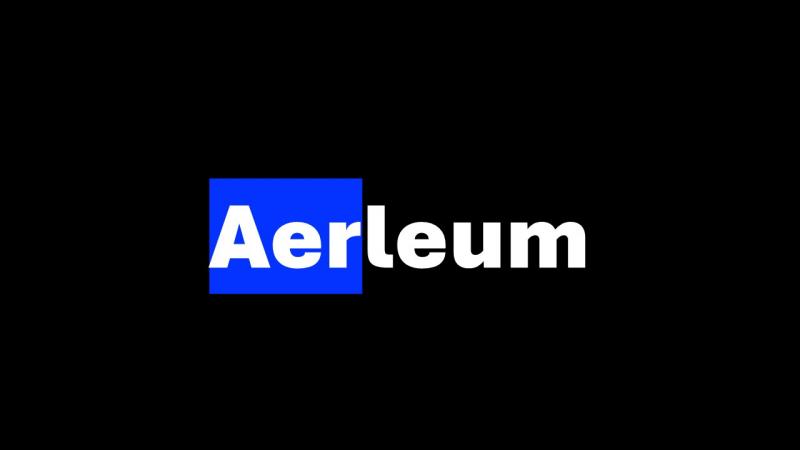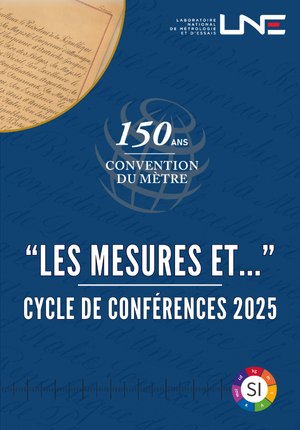Développement d'un stent actif enrobé de nanofibres pour le traitement des maladies artérielles calcifiées // Development of a active stent coated with nanofibers for the treatment of calcified arterial diseases
|
ABG-132841
ADUM-66895 |
Thesis topic | |
| 2025-07-10 | Other public funding |
Université de Lille
VILLENEUVE D'ASCQ CEDEX - Les Hauts de France - France
Développement d'un stent actif enrobé de nanofibres pour le traitement des maladies artérielles calcifiées // Development of a active stent coated with nanofibers for the treatment of calcified arterial diseases
- Chemistry
electrospinning, délivrance prolongée de principe actifs, dispositif médical, vasculaire, calcification des vaisseaux
electrospinning, sustained delivery of drugs, medical device, vascular , calcified vessels
electrospinning, sustained delivery of drugs, medical device, vascular , calcified vessels
Topic description
Le projet ATRASTENT est financé par l'ANR, il se déroulera dans le cadre d'une collaboration
entre plusieurs Laboratoires de l'Université de Lille dont l'UMET et l'INSERM U1008. Il a
pour objectif de développer un stent actif pour le traitement des maladies artérielles
périphériques. Ce stent vise une délivrance locale d'un principe actif permettant d'inhiber la
resténose ainsi que la calcification des vaisseaux. Ce projet, mené en partenariat avec des
experts en biomatériaux, chimie des polymères (UMET) et biologie (U1008), répond à un
besoin médical non satisfait : les stents actuellement disponibles n'apportent pas de solution
efficace pour traiter en particulier les lésions vasculaires calcifiées. ATRASTENT s'inscrit
dans une démarche translationnelle, alliant expertise clinique, industrielle et scientifique, avec
pour finalité la réduction de la morbidité et mortalité liées aux pathologies vasculaires.
L'originalité du projet repose sur le dépôt de nanofibres électrofilées formant une membrane
enveloppant un stent métallique, constituée d'une matrice polymère et de cyclodextrines (CDs),
ces dernières permettant la solubilisation du principe actif hydrophobe dans la solution
électrofilée en formant des complexes d'inclusion, d'augmenter sa photostabilité (car il est
photosensible), et de le délivrer localement et de façon prolongée au niveau de la paroi des
vaisseaux.
------------------------------------------------------------------------------------------------------------------------------------------------------------------------
------------------------------------------------------------------------------------------------------------------------------------------------------------------------
The ATRASTENT project is funded by the ANR as part of a collaboration between several
laboratories at the University of Lille, including UMET and INSERM U1008. Its objective is
to develop an active stent for the treatment of peripheral arterial diseases. This stent aims to
locally deliver an active compound that inhibits restenosis and vascular calcification. This
project, conducted in partnership with experts in biomaterials, polymer chemistry (UMET),
and biology (U1008), addresses an unmet medical need: currently available stents do not
provide an effective solution for treating calcified vascular lesions. ATRASTENT adopts a
translational approach, combining clinical, industrial, and scientific expertise, with the ultimate
goal of reducing morbidity and mortality associated with vascular pathologies.
The originality of the project lies in the deposition of electrospun nanofibers forming a
membrane enveloping a metallic stent, composed of a polymer matrix and cyclodextrins (CDs).
These CDs enable the solubilization of the hydrophobic active compound in the electrospinning
solution by forming inclusion complexes, increasing its photostability (as it is photosensitive),
and delivering it locally and in a prolonged manner to the vessel wall.
------------------------------------------------------------------------------------------------------------------------------------------------------------------------
------------------------------------------------------------------------------------------------------------------------------------------------------------------------
Début de la thèse : 01/10/2025
entre plusieurs Laboratoires de l'Université de Lille dont l'UMET et l'INSERM U1008. Il a
pour objectif de développer un stent actif pour le traitement des maladies artérielles
périphériques. Ce stent vise une délivrance locale d'un principe actif permettant d'inhiber la
resténose ainsi que la calcification des vaisseaux. Ce projet, mené en partenariat avec des
experts en biomatériaux, chimie des polymères (UMET) et biologie (U1008), répond à un
besoin médical non satisfait : les stents actuellement disponibles n'apportent pas de solution
efficace pour traiter en particulier les lésions vasculaires calcifiées. ATRASTENT s'inscrit
dans une démarche translationnelle, alliant expertise clinique, industrielle et scientifique, avec
pour finalité la réduction de la morbidité et mortalité liées aux pathologies vasculaires.
L'originalité du projet repose sur le dépôt de nanofibres électrofilées formant une membrane
enveloppant un stent métallique, constituée d'une matrice polymère et de cyclodextrines (CDs),
ces dernières permettant la solubilisation du principe actif hydrophobe dans la solution
électrofilée en formant des complexes d'inclusion, d'augmenter sa photostabilité (car il est
photosensible), et de le délivrer localement et de façon prolongée au niveau de la paroi des
vaisseaux.
------------------------------------------------------------------------------------------------------------------------------------------------------------------------
------------------------------------------------------------------------------------------------------------------------------------------------------------------------
The ATRASTENT project is funded by the ANR as part of a collaboration between several
laboratories at the University of Lille, including UMET and INSERM U1008. Its objective is
to develop an active stent for the treatment of peripheral arterial diseases. This stent aims to
locally deliver an active compound that inhibits restenosis and vascular calcification. This
project, conducted in partnership with experts in biomaterials, polymer chemistry (UMET),
and biology (U1008), addresses an unmet medical need: currently available stents do not
provide an effective solution for treating calcified vascular lesions. ATRASTENT adopts a
translational approach, combining clinical, industrial, and scientific expertise, with the ultimate
goal of reducing morbidity and mortality associated with vascular pathologies.
The originality of the project lies in the deposition of electrospun nanofibers forming a
membrane enveloping a metallic stent, composed of a polymer matrix and cyclodextrins (CDs).
These CDs enable the solubilization of the hydrophobic active compound in the electrospinning
solution by forming inclusion complexes, increasing its photostability (as it is photosensitive),
and delivering it locally and in a prolonged manner to the vessel wall.
------------------------------------------------------------------------------------------------------------------------------------------------------------------------
------------------------------------------------------------------------------------------------------------------------------------------------------------------------
Début de la thèse : 01/10/2025
Funding category
Other public funding
Funding further details
ANR Financement d'Agences de financement de la recherche
Presentation of host institution and host laboratory
Université de Lille
Institution awarding doctoral degree
Université de Lille
Graduate school
104 Sciences de la Matière du Rayonnement et de l'Environnement
Candidate's profile
Nous recherchons un·e doctorant·e motivé·e pour :
• Les travaux d'electrospining et de conception du stent actif ; La caractérisation des matériaux élaborés ; L'étude des interactions principe actif–cyclodextrines ; L'étude de la cinétique de libération du principe actif.
Travaux expérimentaux programmés : Élaboration des nanofibres par electrospinning ; optimisation des paramètres ; Techniques de caractérisation : rhéologie, spectroscopies IR, RMN, UV-visible, HPLC, microscopie électronique à balayage (MEB), analyses thermiques par DSC et ATG, tests mécaniques, potentiométrie zêta ; tests de libération et dosage de principe actif ; Tests biologiques : mesure de cytotoxicité (encadré par les biologistes)
• Connaissances en chimie organique, en chimie et en physico-chimie des polymères Niveau M2 spécialisé dans les biomatériaux, ou sensibilisant les étudiants dans ce domaine, ou école d'ingénieur.
Compétences attendues en :
o techniques de mise en œuvre des polymères (électrospinning notamment),
o méthodes de caractérisation des matériaux polymères (solution et solide),
o techniques de libération et dosage des principes actifs ;
• Affinité pour le travail à la paillasse ;
• Capacité à travailler de manière autonome, à faire preuve d'initiative, sens de l'organisation ;
• Compétences en communication scientifique (rédaction de rapports, de posters, présentations orales) ;
• Maîtrise de l'anglais écrit et oral exigée
We are looking for a motivated PhD candidate to: • Conduct electrospinning work and design the active stent; • Characterize the developed materials; • Study the interactions between the active compound and cyclodextrins; • Investigate the kinetics of active compound release. Exprimentations scheduled : • Development of nanofibers via electrospinning; optimization of parameters; • Characterization techniques: rheology, IR, NMR, UV-visible spectroscopy, HPLC, scanning electron microscopy (SEM), thermal analysis (DSC and TGA), mechanical testing, zeta potentiometry; • Active compound release tests and quantification; • Biological tests: cytotoxicity measurement (supervised by biologists). Required : Knowledge in organic chemistry, polymer chemistry, and polymer physicochemistry. Master's level (M2) specialized in biomaterials or engineering school with exposure to this field. • Appreciated knowledge in: o Polymer processing techniques (especially electrospinning), o Characterization methods for polymer materials (solution and solid), o Active compound release and quantification techniques; • Affinity for laboratory work; • Ability to work autonomously, take initiative, and demonstrate organizational skills; • Scientific communication skills (report writing, poster creation, oral presentations); • Proficiency in written and spoken English is required.
We are looking for a motivated PhD candidate to: • Conduct electrospinning work and design the active stent; • Characterize the developed materials; • Study the interactions between the active compound and cyclodextrins; • Investigate the kinetics of active compound release. Exprimentations scheduled : • Development of nanofibers via electrospinning; optimization of parameters; • Characterization techniques: rheology, IR, NMR, UV-visible spectroscopy, HPLC, scanning electron microscopy (SEM), thermal analysis (DSC and TGA), mechanical testing, zeta potentiometry; • Active compound release tests and quantification; • Biological tests: cytotoxicity measurement (supervised by biologists). Required : Knowledge in organic chemistry, polymer chemistry, and polymer physicochemistry. Master's level (M2) specialized in biomaterials or engineering school with exposure to this field. • Appreciated knowledge in: o Polymer processing techniques (especially electrospinning), o Characterization methods for polymer materials (solution and solid), o Active compound release and quantification techniques; • Affinity for laboratory work; • Ability to work autonomously, take initiative, and demonstrate organizational skills; • Scientific communication skills (report writing, poster creation, oral presentations); • Proficiency in written and spoken English is required.
2025-07-18
Apply
Close
Vous avez déjà un compte ?
Nouvel utilisateur ?
More information about ABG?
Get ABG’s monthly newsletters including news, job offers, grants & fellowships and a selection of relevant events…
Discover our members
 Groupe AFNOR - Association française de normalisation
Groupe AFNOR - Association française de normalisation  MabDesign
MabDesign  CESI
CESI  Laboratoire National de Métrologie et d'Essais - LNE
Laboratoire National de Métrologie et d'Essais - LNE 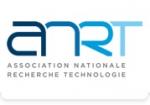 ANRT
ANRT  SUEZ
SUEZ  Tecknowmetrix
Tecknowmetrix 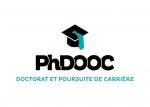 PhDOOC
PhDOOC  Ifremer
Ifremer  ONERA - The French Aerospace Lab
ONERA - The French Aerospace Lab  TotalEnergies
TotalEnergies  Institut Sup'biotech de Paris
Institut Sup'biotech de Paris  ASNR - Autorité de sûreté nucléaire et de radioprotection - Siège
ASNR - Autorité de sûreté nucléaire et de radioprotection - Siège  Nokia Bell Labs France
Nokia Bell Labs France 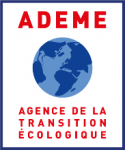 ADEME
ADEME  CASDEN
CASDEN  Aérocentre, Pôle d'excellence régional
Aérocentre, Pôle d'excellence régional  Généthon
Généthon  MabDesign
MabDesign

